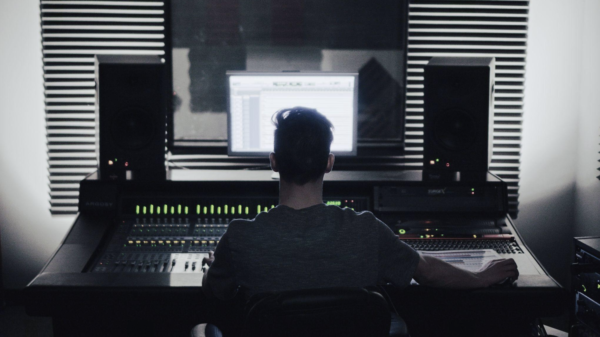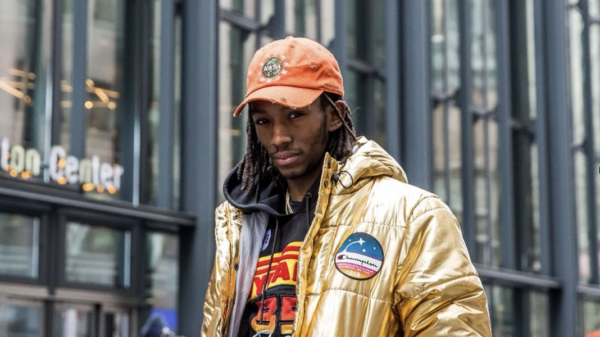Until now, anyone who wanted to hear live recordings of Crosby, Stills, Nash & Young at their peak had to settle for the double album 4 Way Street. That record, culled from their 1970 shows, had its charged moments, including the debut of Neil Young’s “Ohio,” the Stephen Stills and Young tradeoffs on “Southern Man” and “Carry On,” and the late David Crosby’s version of “Triad,” his ménage à trois manifesto. But Stills in particular was never a fan of the album, calling it “atrocious” in a 1974 interview with Cameron Crowe.
The group’s first tour, in 1969, had a new-day spirit — and a set list — all its own. But for decades, fans have had to rely on poorly taped bootlegs, like Wooden Nickel, to experience the performances. After 55 years, that’s about to change with the Oct. 25 release of Live at Fillmore East, 1969, the first-ever official CSNY concert record from that period.
By the time the quartet (backed by drummer Dallas Taylor and bassist Greg Reeves) arrived in New York to play two sets at the iconic Fillmore East on Sept. 19 and 20, 1969, CSNY was very much a new merger. The original trio had launched only a year before and hadn’t played live up through the release of Crosby, Stills & Nash in the late spring of 1969. Young was added soon after, and the group made its formal debut in Chicago, two days before Woodstock; Stills’ comment to the audience about being “scared shitless” wasn’t just idle stage patter.
The fresh possibilities of the lineup are on audio display on Live at Fillmore East, which culls songs from the four sets they played (two a night) at the late Bill Graham’s legendary downtown New York theater. The acoustic set includes Crosby, Stills & Nash songs like “Suite: Judy Blue Eyes,” “Guinnevere,” and “Helplessly Hoping” (where the joy they found in their combined voices is palpable). The electric second half includes Crosby’s “Long Time Gone” and ends with an a cappella version of “Find the Cost of Freedom.” A few tracks, like Young’s “Sea of Madness” and “I’ve Loved Her So Long” (with Graham Nash) and Nash’s “Lady of the Island,” wouldn’t be played on the 1970 tour or any other time by the quartet.
Editor’s picks
There are nods to the past, like Young’s Buffalo Springfield-era “On the Way Home” (also heard on 4 Way Street) and Stills’ “Bluebird Revisited,” a reworked version of his Springfield song “Bluebird.” But the future, more than the past, permeates the album. Stills plays “4 + 20,” the haunted ballad that would later be on Déjà vu, and an acoustic version of “Go Back Home,” the Eric Clapton-fueled rocker that ended up on his first outside-CSNY foray.
With his then-partner Joni Mitchell in the crowd, Nash plays what may be the first live performance of “Our House,” and on an organ rather than piano. The electric portion culminates in a 16-minute jam on “Down by the River,” which Young had just released with Crazy Horse; the CSNY version, featuring extended jamming between Stills and Young, shows how much Young’s alternate band could bring to the epic. (Alas, another song from Young’s Springfield days, “Broken Arrow,” didn’t make the cut.)
Speaking with paid members of the Neil Young Archives on a Zoom call last month, Young seemed palpably excited about the project. “It’s great to hear Crosby and Nash and Stills,” he said. “I had just joined the band like within weeks of when that happened. It was like two weeks after Woodstock or something. It’s a pretty cool record. There’s a ‘Down by the River’ on that record that is maybe the definitive ‘Down by the River,’ even though everyone thinks that the Crazy Horse one is because that’s the one that came out.”
Working with Stills and Young’s longtime engineer John Hanlon, Young seems especially pumped about the sonic quality of the album, which is based on analog tapes without “digital echo,” as he’s called it. “It’s all analog,” he said on that Zoom. “There’s not one digital piece of machinery working in the making of the record. The vinyl comes out is just like a vinyl would have been in 1969. Everything is done the same way. It’s got the sound and is a beautiful thing.”
Trending
Related
Starting with the death of Crosby’s girlfriend Christine Hinton in a car accident, followed by the fraught sessions for Déjà vu, the CSNY train would begin to derail soon after these recordings were made. The band would continue, in various combinations, for the next four decades — a wash-rinse-repeat of breaking up, reconfiguring, quarreling, and disbanding again. Sadly, Crosby’s death last year put any possible quartet reunions to rest, although Stills and Young will reunite next month for Harvest Moon, a charity concert in Lakes Hughes, California.
But in September 1969, all that music and turmoil remained far on the horizon. Looking back on those Fillmore shows, Stills says, in a statement, “We just went for it. What we lacked in finesse, we made up for in enthusiasm…A band on the run. Expecting to fly.”


























